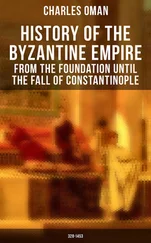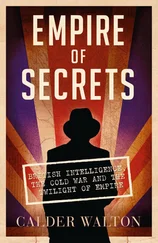He pointed to a slide on the wall. “Lewis, here, has the exact same DNA as any other military clone, it’s just arranged differently.”
“If Lewis had the same DNA as every other clone, why isn’t he like them?” I asked. “Same DNA, same everything, right?”
“That’s what I am trying to explain,” Sam said, his irritation starting to show. I think he was used to being the student. Now I was the one with a million questions, and he lacked the patience to answer them.
“DNA is the basic building block. Genes are made of DNA; but you can change genes by changing the layout of the DNA.”
Seeing I was still confused, he picked up a syringe and a glass dish. “What do these have in common?” he asked.
“They’re lab equipment,” I guessed.
“They’re made of glass. Glass is made of sand. If I have molten glass, I can make a bowl or a syringe, right. Once I melt the sand, I can use the glass to make a bowl or a syringe.”
“Okay, I get that,” I said.
Apparently I didn’t get it, though, because he sighed, and said, “It’s not like bowls are made from bowl sand and syringes are made from syringe sand. Glass fruit sand doesn’t come from glass fruit deserts. It’s all the same sand from the same desert.”
“Yeah, okay, one desert, one kind of sand,” I said, slowing as I finished the sentence because the meaning of what he had said finally dawned on me.
“Okay, so they don’t make bowls out of ‘bowl sand’ and syringes out of ‘syringe sand.’ It’s just sand. What you do with the sand once you melt it is up to you,” Sam said, making sure I understood.
I thought about what he was saying and saw a problem with it. “But it’s not the same with DNA,” I said. “They selected the specific genes when they made us. They spent—”
He put up a hand to stop me. “You said this clone was created as a spy. They designed him to break into your forts, right? Can you think of better camouflage than making him out of your DNA?
“Do you know what chromosomes are made of? You pair a strand of DNA with a protein. Do your security posts test for chromosomes?”
“I don’t know,” I said.
“His DNA is identical to any other clone’s, but his chromosomes are different. Once I started with his chromosomes, the difference became obvious,” said Sam.
“Chromosomes?” I asked, shaking my head. It didn’t make sense to me. “I can see how you might make different chromosomes, but what does that get you. That’s the stuff that determines your sex, right? Women have two X chromosomes and men have an X and a Y.”
“Women have two Xs, most men have an X and a Y, but Lewis had an X and two Ys. He has the same DNA but a different set of chromosomes.”
“Two Y chromosomes? And the Y is what separates men from women. Does that make him more …” I almost said “manly.” “Would that make him strong?” Even as I asked the question, a more pressing concern came to mind— Could we configure the posts to read chromosomes instead of DNA?
“It could make him much stronger than other clones. The potential exists. Lewis was like any other clone on the surface, but his muscles could have been stronger, his heart was stronger …”
“What about his brain?” I asked. “What would that do to his brain?”
“Oh, yes, his brain. You know, the autopsy would have been a lot more productive if you hadn’t shot the subject in the head.”
“I didn’t shoot him,” I said.
“Okay, well, whoever shot him really specked up the works,” Sam said, holding both hands up in frustration. “The bullet blew more than half of his brain out of his skull, and the part that was left was in bad shape.”
He walked over to Lewis and placed his fingers around the bone-and-muscle remains of his chin. “It wasn’t a complete washout.”
He turned the head so the empty brain cavity faced toward me. “It’s not conclusive; but considering the amount of trauma done to this man, we’re lucky we found anything.”
“Found what?” I asked.
“I took a tissue scraping from the area just inside here.” The kid stuck his hand into the gaping brainpan and pointed to the part of the forehead that had not been destroyed by the bullet. During my time as a Marine, I had shot, stabbed, strangled, and exploded enemies, but I never played with their remains. I did not peel away their skins or pull out their organs. Watching Sam the cocky student coroner twist and turn the body made me queasy.
“We got this from his brain,” he said, using tweezers to hold up a gauss-thin strip of meat. “Its NAAs are so low, they’re almost not there.”
I asked the obvious question, “What is NAA?”
“N-acetylaspartatic acid.”
“That doesn’t tell me anything,” I said.
The kid was many things, but he was not a snob. When he continued, he did not speak in a condescending way. “It’s a compound you find in a normally functioning brain. Things go wrong when it’s not there. The lower the NAA level, the bigger the problems, and this guy’s levels were really low.”
This information was interesting but not practical. I asked a practical question, “Is there any way we can configure our security equipment to track this?”
He smiled, nodded, and said, “Dead men don’t walk, blind men don’t see …”
It was a limerick or maybe a line from an old song. The second half went, “I gave her my heart, and she crucified me.”
“General,” he said, “I checked your chromosomes when you came through the door. A coroner can’t be too careful.”
Before leaving the morgue, I asked the kid to write up his findings and send them to Station Security along with recommendations about how the posts could be upgraded to scan chromosomes instead of DNA.
I returned to my quarters and stripped and showered and ran a laser across my teeth, then went to bed, all the while asking the same questions I had been asking before seeing the coroner—Why would one clone fight to the death and another surrender?
Part of the answer was obvious, self-determination. Clones start out alike, but that does not mean they stay that way. I grew up among clones. I knew brave ones and not-so-brave clones, but I never met a clone who was an outright coward. I went to boot camp with men who would not flinch in the face of death and clones who might hesitate before a charge but none who would run from the field.
But the clones I knew had been raised from infancy. These new clones had to have “crawled out of the tube” in their twenties. The Unified Authority did not have time to raise their clones, they needed them out and killing.
As I slid onto my rack, I thought about bowls and syringes and manufactured chromosomes. Sleep did not come so easily that night because along with the bowl and the syringe came images of the cadaver. I’d seen worse. I’d seen rotted, maggot-infested bodies of men. I once stepped on the body of a man killed by Noxium gas. My boot crushed through his chest. It was like stepping on overripe fruit.
It wasn’t the cadaver that bothered me; it was the casual way the damn apprentice coroner handled it that got under my skin. Lewis was a maniac and assassin, but he was still as human as me.
As I played the scene over in my mind, thoughts gave way to fitful sleep, and I dreamed of men fighting a war in which they killed each other with glass bullets. The men who died were buried in glass coffins in a cemetery with glass headstones. Watching them lower the coffins, I wondered if the men who lived and the men who died were made from the same kind of sand.
I could not tell if it came the minute I fell asleep or six hours later. I woke up disoriented, groped for the communications console beside my bed, and croaked the word, “What?”
Читать дальше












